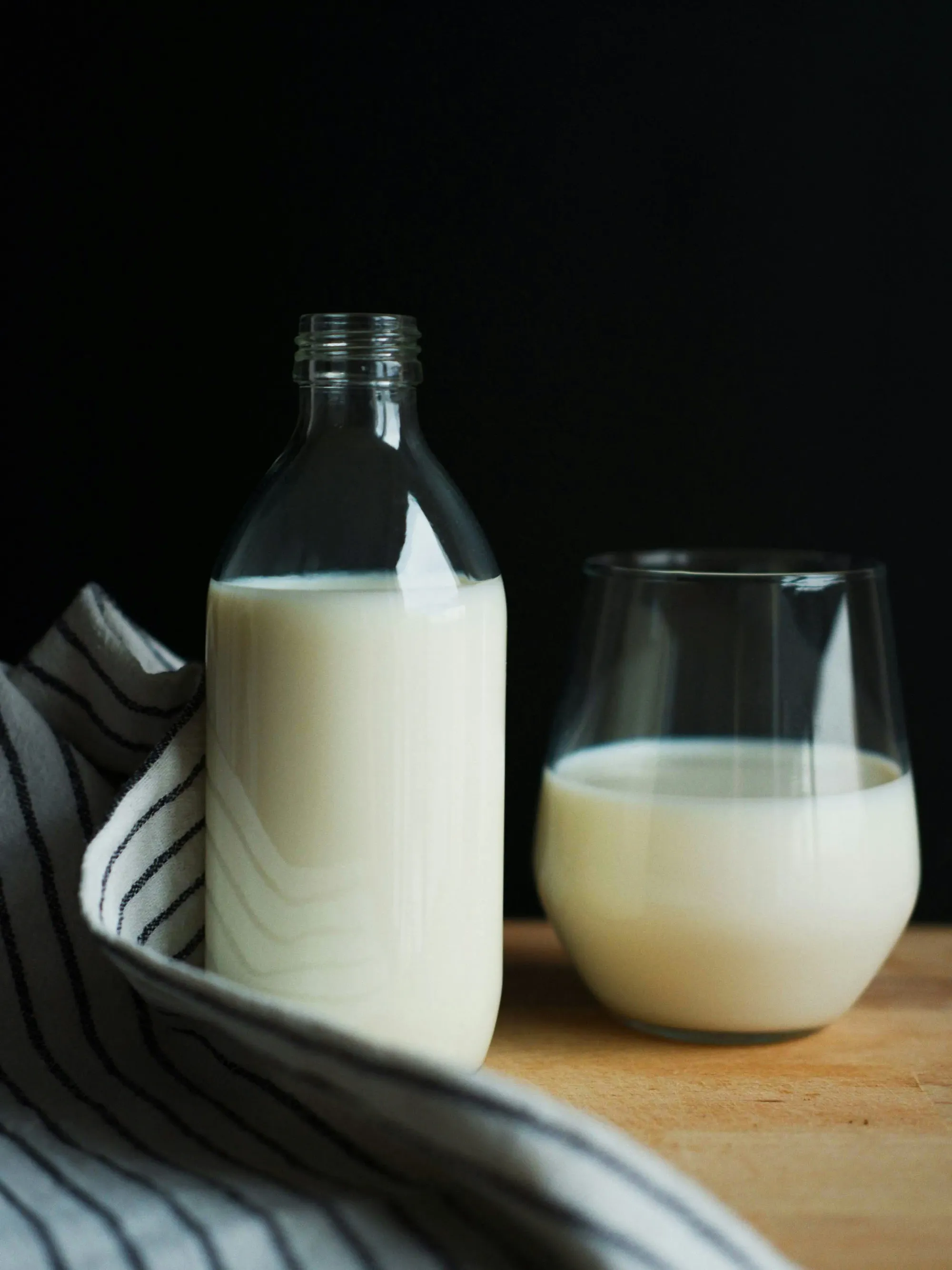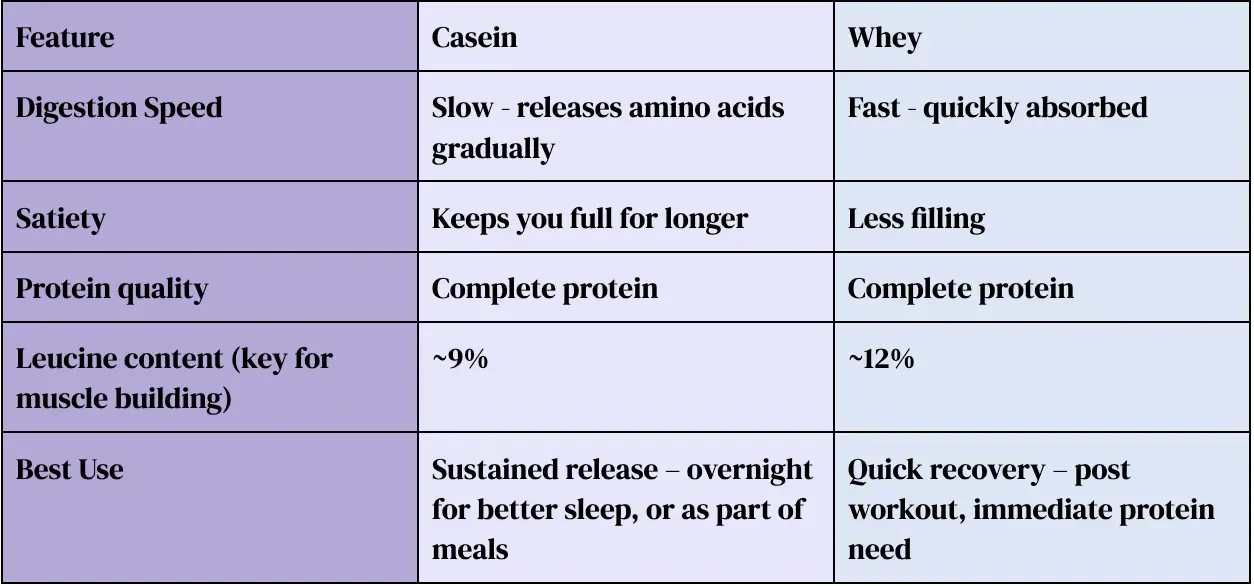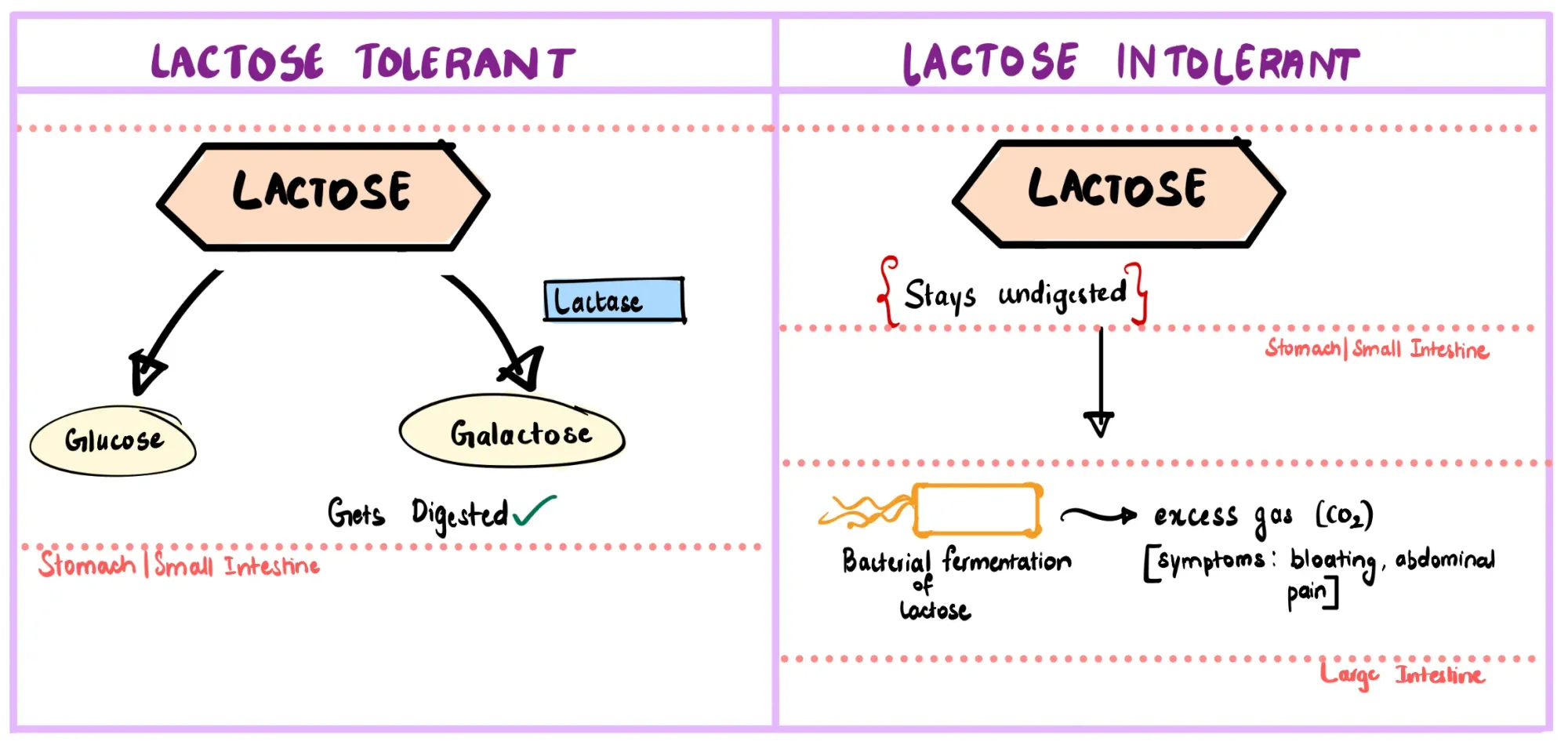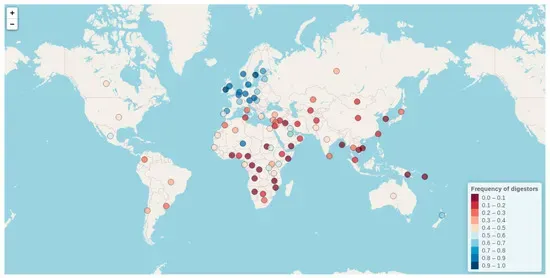Does milk really give you protein?
It depends on who’s drinking it…

Did you know that almost two thirds of the world’s adults can’t properly digest milk? It’s a fact that fuels the common belief that cow’s milk was made for calves, not for us. And while that’s true — milk did evolve to nourish young animals — it still doesn’t explain the whole story.
So why is it that some people can drink milk daily with no problems, while others end up with bloating and regret?
Milk is chemically the same to everyone who drinks it, but the answer lies in what’s inside us (our genes).
In this post, we’ll unpack it all: what kind of protein milk has, how our bodies digest them, why genetics decide whether we tolerate lactose, the evolutionary twists that shaped this trait, and how dairy became such a huge part of modern life.
Milk proteins: What’s inside the glass?
When we think of milk, we usually think of calcium and strong bones first. But milk is also loaded with two key proteins – casein and whey.

Casein is the slow, steady protein. Once it hits your stomach, it gets digested gradually, releasing amino acids little by little (source).
This is why foods rich in casein, like cottage cheese, keep you full for longer. It’s also why that old-school glass of warm milk before bed actually helps some people feel sleepy — casein supports a slow, sustained release that calms the body.
Whey on the other hand, is fast – it digests quickly and gives your body an immediate supply of amino acids (source).
Whey also naturally contains more leucine (~12% of its amino acids) than casein(~9%), which contributes to whey’s rapid stimulation of muscle protein synthesis (source). This is why gyms-goers often consume whey protein to recover after a workout.
Together with casein and whey a glass of milk is a pretty well-rounded protein source, with about 8 grams in one cup. Additionally both casein and whey have all nine essential amino acids making it a ‘complete protein’.
But here’s the twist: for people who feel uncomfortable after drinking milk, the issue usually isn’t the protein at all. The real culprit is the sugar in milk — lactose. And this is where genetics steps in, making milk a completely different experience for different people.
Why Can’t Some People Digest Milk? (The science)
Before we start with the science… What exactly is lactose intolerance?
Lactose intolerance is a digestive condition that happens when your body can’t fully break down lactose, the natural sugar in milk. To digest lactose, you need an enzyme called lactase. In people who are lactose intolerant, the body doesn’t produce enough of this enzyme.
When we’re babies, our bodies make plenty of lactase – that’s how we digest our mother’s milk. But for most people around the world, lactase levels drop after early childhood.

Without enough lactase, lactose travels undigested into the gut, where bacteria ferments it. The result? Gas, bloating, and cramps — the classic signs of lactose intolerance.
So if lactase enzyme reduces after early childhood, why can some people still gulp down milk with no issues?
The answer lies in our DNA. Some of us carry a small genetic change near a gene called MCM6 (source). This tiny tweak acts like a switch that keeps the lactase enzyme turned ‘on’ into adulthood. Scientists call it lactase persistence.
What’s even cooler is that this mutation didn’t just start from one single chance , but started separately in different parts of the world (a classic example of convergent evolution) — in Europe, East Africa, Middle East as humans shifted from nomadic to farming lifestyles and started herding animals for milk.
Today the contrast is striking: Over 90% of Northern Europeans carry lactase persistence, while in East Asia it’s less than 10%, since milk wasn’t historically part of their diet (source).

In simple words: whether you can digest milk easily or not isn’t about will power or diet hacks, but it’s literally inherited from your ancestors.
Are Humans the only ones drinking another species’ milk?
Out in the wild, milk sharing does happen across species — just not in the same way we humans do it. Lionesses have been spotted nursing leopard cubs. Dogs have taken in orphaned kittens, and cats have even raised baby raccoons. These are of course rare moments in nature, but it sure shows that cross nursing is possible.
Then there are the opportunists — the milk thieves. Monkeys have been caught sneaking milk straight from cows, and seabirds have even been seen stealing milk from sea lions.
Milk thieves of the animal kingdom (Source: youtube)
The difference is that other animals may nurse or steal milk occasionally, but humans are the only species that turned it into a cultural practice. We farm animals, process their milk, and drink it by choice — not by chance.
What About Lactose-Free Milk?
When I found I was lactose intolerant, I switched straight to lactose-free milk which is literally just cow’s milk with lactase enzyme added (source).
That means:
- You still get the same protein, calcium, vitamins, and minerals as whole milk.
- The only difference is that the lactose sugar has already been broken down into glucose and galactose, so your body doesn’t have to struggle.
- Taste-wise, it’s slightly sweeter because of that breakdown (which is a plus😋)— but nutritionally, it still has all the benefits of whole milk.
Quick Note on Plant Milks
Almond, oat, and soy milks are popular alternatives, especially for people who are lactose intolerant or vegan. Soy milk comes closest to dairy for protein (~7g/cup), while oat milk is naturally higher in carbs and has a creamy texture. Almond milk is lower in protein, but it’s light.
Most plant milks are fortified with calcium and vitamin D, so they still support bone health — just keep in mind that nutritionally, they’re a little different from cow’s milk.
The Final Sip 🥛
So, does milk really give you protein?
Absolutely — milk is a complete protein source with both casein and whey.
But whether milk feels like a superfood or a stomachache depends less on the milk itself and more on your genes. Some of us inherited the ability to digest lactose for life, while others didn’t. The good news is that today, there’s a version of milk for everyone — lactose-free, soy, oat, almond — so no one misses out.
In the end, milk isn’t just about nutrition; it’s a story of evolution, culture, and how our bodies adapt in different ways.
